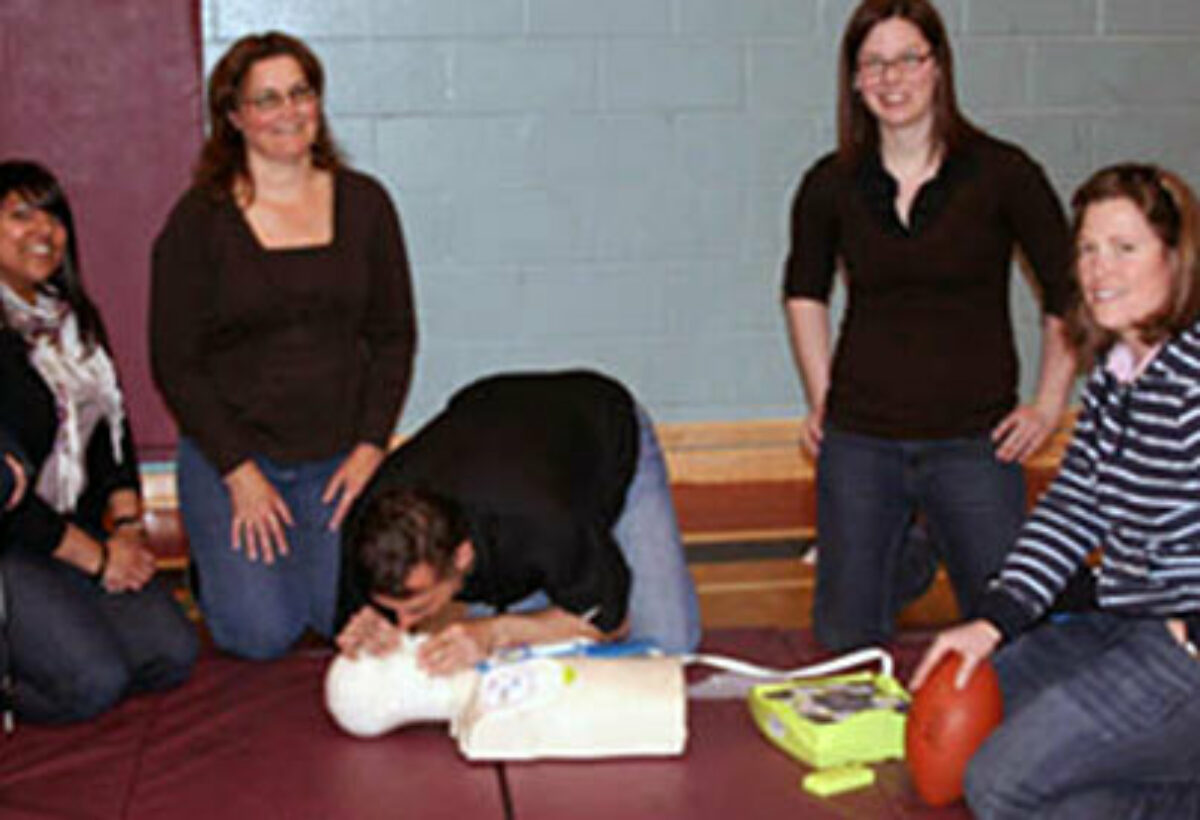Ontario schools train entire staff on defibrillator use

When ACT places an Automated External Defibrillator (AED) in a high school, the school must ensure a group of teachers and staff is trained on how to use the lifesaving device.
But two Ottawa schools have gone above and beyond that request, holding open orientation sessions that ensure most, if not all of their staff, have basic knowledge of the AED, where it is located and how to use it in an emergency.
Just days after receiving their AED, the phys-ed staff at All Saints Catholic Secondary School in Kanata used a portion of their schools’ personal development day to introduce almost 30 staff to the AED and give them hands on practice with the device.
“We are here to eliminate any fears or reservations you may have about using the AED in an emergency,” said teacher Kendra Read to a group of coaches, custodial staff, educational assistants and teachers of all subjects and grades. “It may be something you never need to use, but it is good to know how to use it – just in case.”
Teacher Anne Murphy showed the staff where their AED was located before using the AED training units to teach the group.
“It is made so anyone can use it,” she said enthusiastically.
Religion teacher Chantel Campbell said learning how to use the AED is important to her for very personal reasons.
“My dad died of a heart attack in 1997,” she said. “He was just at work when he started to experience chest pain, and then he just put down his head and died.”
“It makes you wonder if things would have been different if an AED had been there,” said Chantel, who is now a strong advocate for AED training. “If you have a chance to save a life, you should do everything you can to ensure that you are trained on the tools.”
All Saints Catholic Secondary School isn’t the only school training their staff on the AEDs.
Ottawa’s Glebe Collegiate Institute held a mandatory meeting for their entire staff to learn how to save a life – about 120 staff attended.
“The more people who are trained, the better off we are,” said Glebe principal Patricia Kulka. “Now I have all my staff trained, plus 750 students to date, and next year when we do it again we’ll train another 350 students.”
Having so many people trained is important to the staff at Glebe Collegiate Institute, not just to ensure that the staff and students are safe, but also the community members who frequent the school in the evenings.
“High school is done at the end of the day but at 6 p.m. the school is open for continuing education and interest courses,” said Patricia. “On Saturday the school is used for international language training.”
Since the pilot project began in March 2007, Patricia and her staff have become steadfast supporters of the ACT High School AED Program.
“Kids think that it is cool. Parents love it, and our teachers say it is one of the best trainings we provide,” said Patricia.
“As a principal I don’t have any expectations for my kids that I don’t have for my staff, and I hold everyone to a very high standard,” she continued. “So if I’m training all of my students, why wouldn’t I train all of my staff?”
The ACT High School CPR Program was made possible thanks to the generous support of ACT’s core partners, companies in the research-based pharmaceutical industry: AstraZeneca, Bristol-Myers Squibb Canada, Pfizer Canada and sanofi-aventis. They provide ACT’s sustaining funding and are committed to the Foundation’s national goal of promoting health and empowering Canadians to save lives.
The Advanced Coronary Treatment (ACT) Foundation is an award-winning, national charitable organization dedicated to establishing CPR in high schools across Canada. ACT raises funds to donate mannequins, teacher training, manuals and other materials to schools and guides schools in program set-up and long-term sustainability. Teachers teach CPR to their students as a regular part of the curriculum. More than 900,000 youth have been trained in CPR through this lifesaving program to date.
